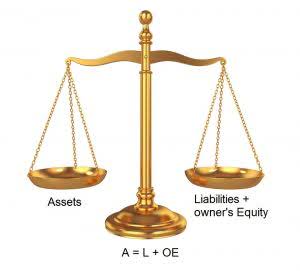
They ensure that the assets, revenues, and equity reported are not overstated, and that liabilities are presented in relation to any discounts or premiums. This transparency helps in accurate reporting, better decision-making, and instills greater confidence among investors and stakeholders. Stepping up your contra account management game is made easier with a host of tools and resources at your fingertips. For starters, accounting software platforms like QuickBooks or Xero offer functionalities tailored to track these accounts precisely, complete with automated entries for common transactions like depreciation or returns. To keep a finger on the pulse of your contra accounts, you might also consider dashboards and reporting tools that offer real-time insights into these critical financial metrics.
What is a Contra Account: Definition and Explanation
Navigating the world of bookkeeping accounting can sometimes feel like piecing together a complex puzzle. This lesser-known but essential element helps businesses accurately report their net sales by offsetting gross revenue with returns, allowances, and discounts. Understanding how these accounts work not only sharpens your financial reporting but also unlocks insights into customer behavior and smarter business decisions.
What is a Contra Account?

The purpose of a contra expense account is to record a reduction in an expense without changing the balance in the main account. The purpose of the Owner’s Withdrawal account is to track the amounts taken out of the business without impacting the balance of the original equity account. A delivery van is purchased by a business to use in delivering product and picking up materials. The company uses Straight-Line Depreciation to track the loss of value of the asset over time. The company should minus the sales contra revenue account return/allowance/discount from gross sales in the above case. The difference between an asset’s account balance and the contra account balance is known as the book value.
- This allowance is recorded with a debit to Bad Debt Expense and a credit to Allowance for Doubtful Accounts.
- Sales allowances are price reductions given to customers who accept products with minor defects instead of returning them entirely.
- A contra asset account is an asset account where the account balance is a credit balance.
- To properly account for this scenario in their books, the company must record the gross sales figure (which is the total sales revenue) and the value of the discount on early payments.
- Contra asset accounts are typically used for accumulated depreciation, amortisation, and other accounting adjustments.
- To account for depletion, an Accumulated Depletion account is created so that it can serve as a contra account for the parent Fixed Asset account.
Example #1 – Based on Sales Return
A contra revenue account should be categorized as such, often with a debit balance, which offsets the credit balance of standard revenue accounts. This classification ensures that all transactions recorded under this account reflect accurately in financial reports, aiding in transparent financial practices. A contra liability is an account in which activity is recorded as a debit balance and is used to decrease the balance of a liability.

Cash Flow Statement
It is not classified as a liability since it does not represent a future obligation. A liability recorded as a debit balance is used to decrease the balance of a liability. The company has a contra asset account for accumulated depreciation expense and a separate asset account for equipment cost. The contra asset account would be used to offset the equipment account on the balance sheet.
- This will help prevent any confusion later on, especially when reconciling financial statements.
- This can be particularly useful for investors and other stakeholders who are interested in understanding the true financial health of a company.
- The statement of cash flows may see an increase or decrease in cash flow from operating activities depending on the timing of customer payments.
- The amount is reported on the balance sheet in the asset section immediately below accounts receivable.
- Refine your return policies to be clear yet reasonable, balancing customer flexibility with business protection.
- Analyze sales patterns, customer behavior, and profitability metrics to inform your decisions.
- By understanding the different types of accounts receivable journal entries, businesses can accurately record transactions related to accounts receivable and maintain the integrity of their financial statements.
- The contra revenue account is a reduction from gross revenue, which results in net revenue.
- Ensure every entry has corresponding documentation—such as receipts or return authorizations—to back up figures reported during audits or reviews.
And for those moments when a second opinion is invaluable, professional forums and online communities like Proformative or the Accountants Community on Intuit can provide guidance and best practices from experienced peers. With the right tools and the wisdom of the community, managing contra accounts becomes a seamless part of your accounting routine. The contra asset account Accumulated Depreciation is deducted from the related Capital Assets to present the net balance on the parent account in a company’s balance sheet. The revenue contra accounts Sales Returns, Discounts and Allowances are subtracted from the main Sales Revenue account to present the net balance on a company’s income statement.
To manage contra revenue effectively, focus on strategies that minimize these occurrences and enhance profitability. Refine your return policies to be clear yet reasonable, balancing customer flexibility with business protection. Also, optimize your discount strategies by offering them selectively based on customer segment or purchase behavior. Regularly review these policies and adjust based on data-driven insights to align with market conditions and customer expectations. They adjust the balances of accounts to reflect the actual financial position of a company.
- It records the sale of goods or services on account and the corresponding increase in accounts receivable.
- Accountants use contra accounts rather than reduce the value of the original account directly to keep financial accounting records clean.
- The purpose of this account is to increase the effective interest rate of the notes.
- Contra equity is a general ledger account with a debit balance that reduces the normal credit balance of a standard equity account to present the net value of equity in a company’s financial statements.
- Contra accounts are used in accounting to provide a more accurate picture of a company’s financial position.
- When a specific accounts receivable is deemed uncollectible, it is written off against the allowance for doubtful accounts in a journal entry to clear accounts receivable.
Sales returns occur when a customer returns a product they previously purchased, a common occurrence in retail and e-commerce. As a business owner, you’ll record these returns as contra revenue because they reduce the initial sales amount reported. Many accounting software programs have built-in features that allow for the creation and management of contra accounts. These programs help to streamline the accounting process and ensure that all transactions are properly recorded.

Sales returns and allowances is a contra revenue account that is used Bookkeeping for Chiropractors to offset the balance of the sales revenue account. It represents the amount of sales that are expected to be returned or refunded to customers. The purpose of this account is to reduce the net sales on the income statement.
